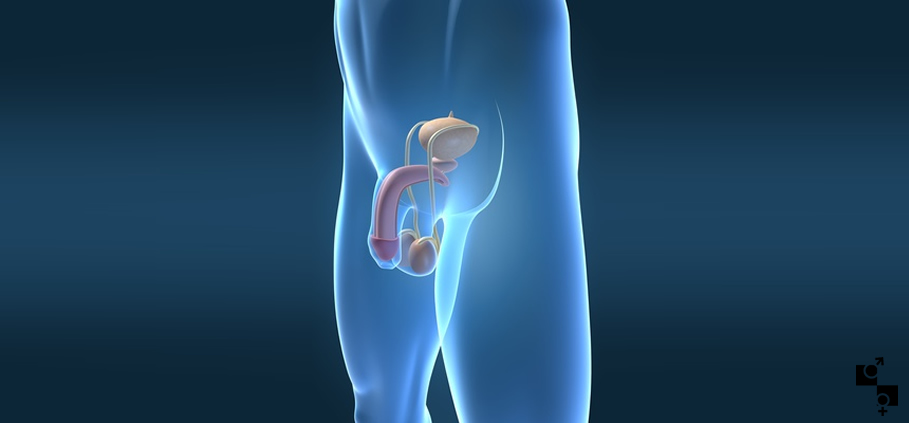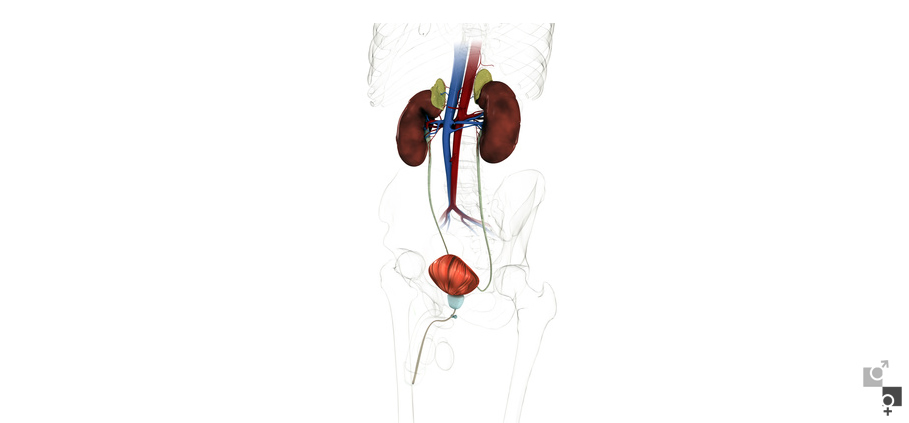Diseases of the Penis
- •Peyronie’s Disease
- •Penile Fracture
- •Priapism
- •Erectile Dysfunction
- •Sexually Transmitted Penile Diseases (Condylomas, Balanoposthitis etc.)
- •Penis Cancer
- •Phimosis
- •Microphallus
- •Hypospadias
- •Lichen Sclerosus (also known as Lichen Sclerosus et Atrophicus)
- •Infections of the external genital organs (Penis)
- •Preputial pearl-like glands, inflated preputial canal glands
- •Molluscum Contagiosum
Peyronie’s Disease
Peyronie’s disease is characterized by the presence of hard plaques on the shaft of the penis which result to curvature of the penis during erection. The exact etiology of the disease remains indefinite. The three main symptoms of the condition is pain during erection or penetration, scleroses in the shaft and penis curvature. It is necessary to treat the disease when it first appears or when the curvature of the penis impedes its entrance in the vagina during sexual intercourse or when the erection is accompanied by intense pain. Immediate surgical restoration is required.
Penile Fracture
Penile fracture is the rupture of the tunica albuginea (the fibrous envelope) of the penis. It usually occurs upon intense of violent injury of the (erect) penis. The description of this injury includes immediate and acute pain, automatic flaccidity (loss of erection) and penis haematoma. Immediate surgical restoration is required.
Priapism
It is the involuntary, painful and prolonged erection which persists after ejaculation despite the absence of sexual stimulation. The causes of the disease may be pathological, or associated with the use of some medications (antidepressants, anticoagulants etc.). Treatment must be sought immediately and can be achieved with medication or surgical operation.
Erectile Dysfunction
Erectile dysfunction is characterized as a Disorder and is the permanent or periodic inability of the man to achieve and maintain an erection sufficient for a satisfactory sexual intercourse. The causes may be physical (vascular, neurogenic, hormonal, chronic diseases, use of medical substances, infections, undercurrent malignant conditions of the lower urinary system), psychogenic (depression, performance anxiety) or advanced age. The therapeutic options are many and various, such as prescribed medication, surgical treatment, and proper psychotherapeutic treatment. video
Sexually Transmitted Penile Diseases (Condylomas, Balanoposthitis etc.)
See “Sexually Transmitted Diseases (STD)” unit or consult your medical care provider.
Penis Cancer
Penis carcinoma does not occur so often in the developed countries as in the underdeveloped countries, where the disease rate can reach 20%. This difference is due to the poor to non-existent sanitary conditions of these countries combined with the reduced access to health services. The disease is rarely observed to men submitted to circumcision or younger than the age of 60. The main causative factor of penis cancer is the presence of the human papilloma virus (HPV). The disease is treated with surgical operation and must be immediate.
Phimosis
It is a condition in which the glans penis cannot be revealed due to preputial stenosis (stenosis or narrowness of the foreskin) that prevents retraction. The most usual cause of the condition is the chronic infection of the glans penis and the prepuce due to poor local hygiene and can occur at any age. Also people suffering from diabetes mellitus are likely to develop chronic balanoposthitis which will result in phimosis. The condition may cause problems with urination, pain during sexual intercourse, premature ejaculation, short erection, paraphimosis (inability to retract the foreskin in position over the head of the penis). Treatment is achieved through surgical operation. video
Microphallia
It is a condition in which the length of the penis is abnormally small. The condition may be caused by hereditary predisposition, hormonal disorders or genetic abnormalities and may cause impotency and serious social and psychological problems and disorders. The treatment of this problem consists of surgical operation, medication and proper psychotherapeutic support.
Hypospadias
It is the most common congenital abnormality of the penis. In this condition, the urinary meatus (opening) is abnormally located on the ventral aspect of the shaft (the scrotum or the perineum) rather than at the tip of the glans of the penis. It causes problems during urination, difficulty in sexual intercourse which may result to psychological problems. Restoration of hypospadias is achieved with surgical operation and the age of 4 years is consider the most appropriate, because at this age the penis has developed sufficiently and cooperation and communication with the child is more feasible. A similar type of birth defect is “Epispadias” which can be observed to people regardless of sex. In men, the only difference with hypospadias is that the urinary meatus is located on the dorsal aspect of the shaft.
Lichen Sclerosus (also known as Lichen Sclerosus et Atrophicus)
Dystrophic condition which affects and changes the quality of tissue. It appears in the prepuce, glans penis and the urinary meatus. Its etiology is unknown.
Infections of the external genital organs (Penis)
See “Sexually Transmitted Diseases (STD)” unit or consult your medical care provider.
Pearl-like periglanular glands, inflated balano-preputial canal glands
See “Sexually Transmitted Diseases (STD)” unit or consult your medical care provider.
Molluscum Contagiosum
See “Sexually Transmitted Diseases (STD)” unit or consult your medical care provider.



